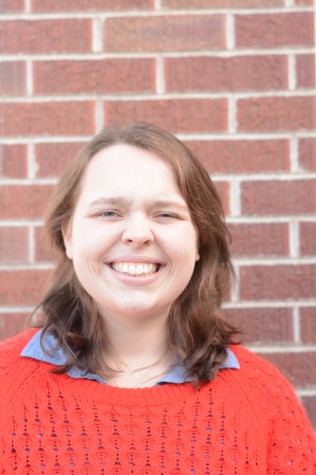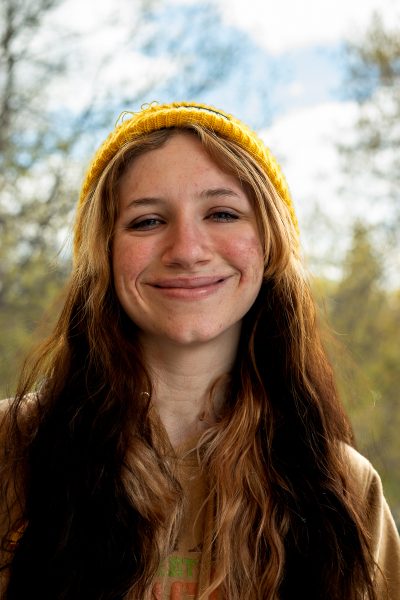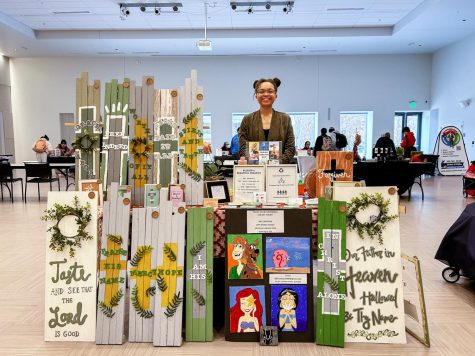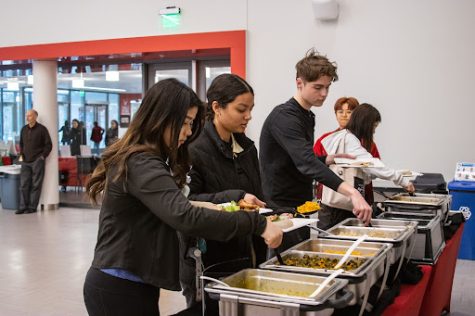Michael Brown grand jury decision symbolized in historic play on campus
December 4, 2014
The lights are dim in the EWU theatre building on a cold Saturday evening. As I wait for the doors to open, my play brochure in hand, I keep singing “We Shall Overcome,” over and over softly to myself.
This will be my third time seeing the EWU Theatre’s adaptation of “To Kill a Mockingbird” since it premiered Nov. 14 on campus.
It strikes a chord with me, for numerous reasons.
I read the book, written by Harper Lee, many years ago at a time when I, as a teenger, did not fully comprehend racism, social injustice or inequity. Reading books such as “The Bluest Eye,” by Toni Morrison; “Black Boy,” by Richard Wright and “Their Eyes Were Watching God,” by Zora Neale Hurston truly resonated with me after I graduated from high school. I even remember singing “We Shall Overcome” in my elementary school choir for Black History Month as a child; analyzing Martin Luther King Jr.’s profound “I Have a Dream” speech as a young girl in class intrigued me.
All I understood about the African-American community and slavery at that time was how sad it made me feel to see human beings endure this kind of hate from people that were just like them. I asked myself at the tender age of eight: How could human beings murder other people because they have a darker skin color? Why are white people so cruel to African-Americans?
I felt like no one could give me a straight answer, except for my dad.
“That’s just how some people are, sweetie,” my father answered. “Fear does that to people, even those who are good.”
“Most people are, Scout, when you finally see them,” said Atticus Finch.
“To Kill a Mockingbird” was bittersweet and beautiful, in the sense that this historic piece of literature, published in 1960 at the height of the Civil Rights Movement, still rings true today at the turn of 2015.
In the 1950s, riots and protests occurred all throughout Alabama, Louisiana, Mississippi and other southern states due to segregation of African-Americans. Many racially-driven court cases were considered unjust, and segregation in public schools was prominent.
On Aug. 28, 1955, 14-year-old Emmett Till, an African-American teen, was murdered for “talking fresh” to a white woman in Mississippi. Roy Bryant, husband to the woman, and J.W. Milam, Bryant’s half brother, were arrested. They were acquitted by an all-white jury despite testimony tying them to the crime. Years later, Bryant and Milam admitted to killing Till in a magazine interview. The image of Till is still imprinted in my head when I viewed it in my middle school history class.
“They’ve done it before and they’ll do it again and when they do it, seems that only the children weep,” said Finch.
Michael Brown Jr., an African-American college student, son and friend, was 18 years old when he was shot dead by a white police officer in Ferguson, Missouri, on Aug 9. His high school graduation photo enveloped the EWU theatre along with images of African-American protesters peacefully marching in the streets of Missouri, holding signs that read, “Am I next?”
Brown and Till were two teenagers who had one thing in common: They died way too young at the hands of white men.
According to the CDC, homicide was the number one killer of African-Americans – about 50 percent – between the ages of 15-34 in 2011, compared to 3.8 percent of white males who died that same year. The CDC, however, did not specify the racial breakdown of these statistics in regards to who murdered whom, or vice versa.
The rate of police killing black Americans, mostly men, as of 2012 is nearly the same as the rate of lynchings in the early 20th century, as stated by the FBI and restated by Rachel Doležal, professor in the EWU Africana Studies Department and writer for The Inlander, at the EWU BSU panel event on Nov. 14. The mayor of Spokane appointed Doležal to serve as a police commissioner and oversee equity in the police force.
Every three or four days from 2005 to 2012, an African-American is killed by a white police officer, according to recent statistics gathered by the FBI and reported by USA Today.
The play denotes these statistics in a historical fashion that helps audience members understand racial segregation and the deaths of young African-American men, especially taking a proactive approach toward racial issues within society.
Atticus Finch, father of Scout and Jem Finch in the play, said, “You never really understand a person until you consider things from his point of view … until you climb inside of his skin and walk around in it.”
The audience acts as the jury in “To Kill a Mockingbird,” which hands the judge a guilty verdict for Tom Robinson, a slave wrongfully convicted of raping a white woman in the play.
“[Atticus] said you never really know a man until you stand in his shoes and walk around in them.”
For a moment during the play, audience members are in the jury’s shoes. Would they let their biases and prejudices of African-Americans affect their court decision? Would they even realize if their verdict was racist?
For a moment during the play, audience members are in Robinson’s shoes. Does the color of his skin effect whether he gets the death penalty, or becomes a free man who can trust the justice system?
I was in Scout’s shoes during the play. Her curiosity brought me back to being eight years old when I was learning about racism in school. It brought me back to what I learned in elementary school, and how my opinions and college education have portrayed a new perspective for me as a young woman about to graduate.
On Nov. 24, the grand jury in the Michael Brown case decided not to indict the Ferguson police officer on charges for killing the African-American man. Peaceful protesters and angry looters took to the streets of Ferguson. Protests occurred from New York City to Chicago, from Seattle to the streets of Spokane, and are still going on as this editorial goes to print.
“We’re paying the highest tribute you can pay a man. We trust him to do right. It’s that simple.”
In a sense, the public education system has failed many young scholars when it comes to racism in America. Without literature, songs, theater acts, grave sights and court documents – not the standard American history books, oddly enough – people in America would not be informed of the unjust, unfair systems in America when it comes to race.
We, as a society, owe sympathy to our African-American fathers and mothers, sisters, brothers, cousins and friends, including black leaders who found their place during the Civil Rights Movement. African-American, Hispanic, Caucasian – simply, American – young people who are rising to be the voices for change, are the voices of our future.
We, as human beings, need change. We owe it to Tom Robinson; Michael Brown Jr.; Emmett Till; Trayvon Martin, a 17-year-old student shot by a community watchman for looking “suspicious;” and even Vonderrit Myers Jr., another young African-American shot by Ferguson police officers under suspicion that he was grabbing a gun from his waist.
We should strive to be in the shoes of those we wrongfully judge, convict and discriminate. We all should strive to be better than what we feel is true about our own biases, without any rational reasoning to accept it.
Furthermore, students should always question what they read – or do not have the right to read – in school textbooks or literature. My school district banned the reading and teaching of “The Adventures of Huckleberry Finn” when I was in high school due to the use of the “N” word. My senior English teacher went behind their back and taught it to us anyway. We need more people like her teaching students.
If we, as a society, dare to let our unconscious thoughts define our actions, our prejudices slur our speech, then we, as a society, are doomed to repeat and will continue to experience history’s past, for it goes unlearned and ignored.
Dare we listen to the leaders of history’s past and accept that maybe they were right, and we just do not care to listen?






![Simmons said the biggest reasons for her success this year were “God, hard work, and trusting [her] coach and what she has planned.”](https://theeasterner.org/wp-content/uploads/2024/05/image1-1-1200x800.jpg)









